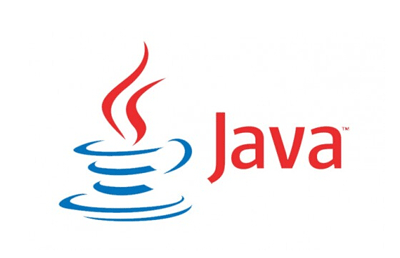Java 从入门到进阶之路(二十二)
在之前的文章我们介绍了一下 Java 中的 集合框架中的Collection 中的一些常用方法,本章我们来看一下 Java 集合框架中的Collection 的迭代器 Iterator。
当我们创建完成集合后,怎么样从集合中取元素呢?Java 为我们提供了迭代器 Iterator 来帮我们实现,如下:
1 import java.util.ArrayList; 2 import java.util.Collection; 3 import java.util.Iterator; 4 5 /** 6 * 遍历集合 7 * Collection 提供了统一的遍历集合元素的方式:迭代器模式 8 * Iterator iterator() 获取用于遍历当前集合的迭代器 9 * java.util.Iterator 是一个接口,规定了用于遍历集合元素的相关方法, 10 * 不同的集合提供了相应的实现类, 11 * 无需记住那些类的名字,只将他们当做 Iterator 即可 12 * <p> 13 * 遍历集合遵循:问,取,删的步骤,其中删除不是必须操作 14 */ 15 public class Main { 16 public static void main(String[] args) { 17 Collection collection = new ArrayList(); 18 collection.add("one"); 19 collection.add("two"); 20 collection.add("three"); 21 collection.add("four"); 22 // 获取用于遍历当前集合的迭代器 23 Iterator iterator = collection.iterator(); 24 /** 25 * boolean hasNext() 问的过程 26 * 该方法是判断集合中是否还有元素可以取出 27 * 28 * E next() 取的过程 29 * 获取集合中下一个元素 30 * */ 31 while (iterator.hasNext()) { 32 String string = (String) iterator.next(); 33 System.out.println(string); // one two three four 34 } 35 } 36 }
从上面的代码可以看出,我们可以通过迭代器 Iterator 来输出每一个元素,那如果我们想要删除其中一个元素呢,既然我们可以遍历出每个元素,那我们可不可以通过 equals 来判断,如果存在就通过之前讲的 remove 方法删除掉呢,如下:
1 import java.util.ArrayList; 2 import java.util.Collection; 3 import java.util.Iterator; 4 5 public class Main { 6 public static void main(String[] args) { 7 Collection collection = new ArrayList(); 8 collection.add("one"); 9 collection.add("two"); 10 collection.add("three"); 11 collection.add("four"); 12 // 获取用于遍历当前集合的迭代器 13 Iterator iterator = collection.iterator(); 14 while (iterator.hasNext()) { 15 String string = (String) iterator.next(); 16 if ("one".equals(string)) { 17 /** 18 * 在使用迭代器遍历集合时,不要使用集合的方法增删改查 19 * 否则会引发异常 20 * */ 21 // collection.remove(string); // 编译器错误 Exception in thread "main" java.util.ConcurrentModificationException 22 iterator.remove(); // 可以直接调用 Iterator 自带的 remove 方法,相当于去一个删一个 23 } 24 } 25 System.out.println(collection); // [two, three, four] 26 } 27 }
我们在讲数组的时候,对数组进行过遍历操作,并且用到过 for each 方法,这个在集合中同样适用,如下:
1 import java.util.ArrayList; 2 import java.util.Collection; 3 4 /** 5 * JDK5.0 之后推出了一个新的特性 6 * 增强 for 循环,又叫做新循环,for each 7 * <p> 8 * 新循环不能代替传统循环, 9 * 作用仅仅是用来遍历集合或数组的 10 */ 11 12 public class Main { 13 public static void main(String[] args) { 14 String[] array = {"one", "two", "three", "four"}; 15 for (int i = 0; i < array.length; i++) { 16 System.out.println(array[i]); // one two three four 17 } 18 for (String string : array) { 19 System.out.println(string); // one two three four 20 } 21 22 Collection collection = new ArrayList(); 23 collection.add("one"); 24 collection.add("two"); 25 collection.add("three"); 26 collection.add("four"); 27 for (Object object : collection) { 28 String string = (String) object; 29 System.out.println(string); // one two three four 30 } 31 } 32 }
在上面的代码中,可以看出我们可以通过 for each 的形式输出 collection 集合,那可不可以通过 collection.remove() 进行删除呢,如下:
1 import java.util.ArrayList; 2 import java.util.Collection; 3 4 public class Main { 5 public static void main(String[] args) { 6 Collection collection = new ArrayList(); 7 collection.add("one"); 8 collection.add("two"); 9 collection.add("three"); 10 collection.add("four"); 11 for (Object object : collection) { 12 String string = (String) object; 13 if("one".equals(string)){ 14 /** 15 * 新循环并非新的语法, 16 * 新循环是编译器认可,而不是虚拟机认可 17 * 使用新循环遍历时,编译器会将它改为迭代器但是遍历 18 * 所以在使用新循环遍历集合时,不能通过集合的方法增删改查 19 * */ 20 collection.remove(string); // 编译错误 Exception in thread "main" java.util.ConcurrentModificationException 21 } 22 } 23 } 24 }
新循环并不能实现我们想要的增删改查,我们可以简单低理解为旧瓶装新酒。


 Java 从入门到进阶之路(二十二), Java 集合框架中的Collection 的迭代器 Iterator。
Java 从入门到进阶之路(二十二), Java 集合框架中的Collection 的迭代器 Iterator。

 浙公网安备 33010602011771号
浙公网安备 33010602011771号